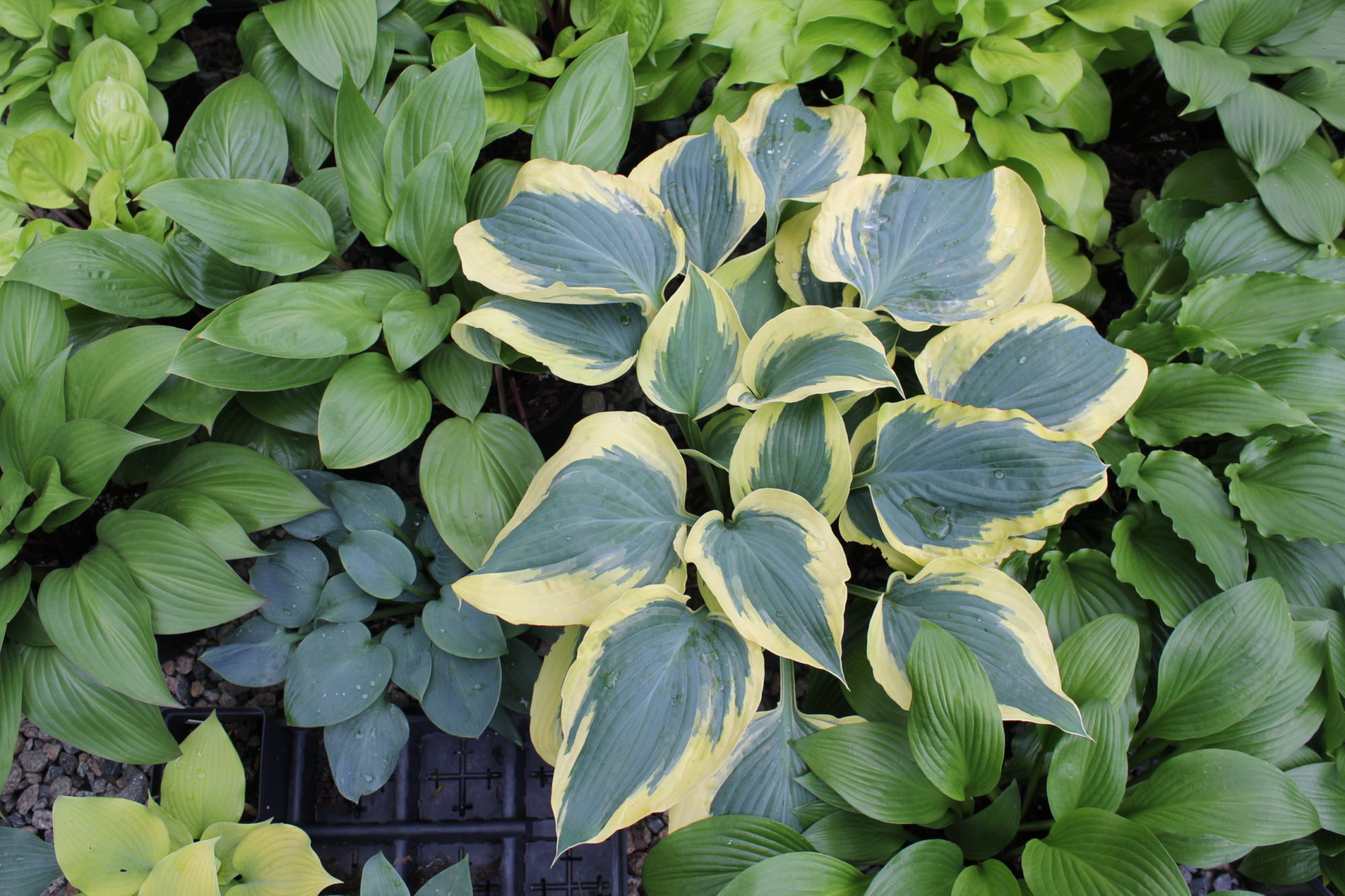Blog 2 May 8, 2020
How often do you think about hosta roots? You may curse them if they are a solid tangled block devoid of any potting mix when you finally decide to repot that hosta that you should have shifted two years ago. Or maybe it is the emotional heartbreak when your prize hosta has been “voled” and it now is devoid of roots. Hosta roots generally do not attract many admirers, out of sight, out of mind.
I observe a multitude of hosta roots almost daily during shipping season. If you received a box of hostas from us this week you may have noticed that our hostas are making their new roots right now. These inch or so very shiny bright, white roots are stretching down from the base of the hosta crown above last year’s roots. Yes, hostas actually grow themselves up out of the ground each year making new rings of roots above the old ones like adding floors to an apartment building under construction.

Hostas for whatever reason, and I know they must have a good one, wait about three weeks after their leaves emerge to make new roots. They make leaves, then roots, more leaves and then more roots. For each flush of foliage there is a corresponding flush of roots that follows. Those new roots grow rapidly reaching the bottom of a properly sized pot in 2-3 weeks. Pretty handy.
Finally, not all hosta roots are created equal. There is actually a wide diversity in root types traceable back to the parental species, (isn’t genetics wonderful?). H. sieboldiana roots are large, (really more like fat), and seem sort of “woody”. H. longipes and H. kikutii hybrids have very long but few roots. The best roots of all from the shipper’s perspective are from H. yingeri heritage. They become completely clean and pearly white with just one swish in the bucket. Fortunately for us, hostas that we frequently ship like ‘First Blush’PP28,920 inherited these superb roots as have many of our yellow hostas with red petioles.
Next time you open that box of special bare root hostas that arrives almost magically on one of those ubiquitous brown vans, take a minute and compare and contrast their roots, then plunge them into that waiting bucket of water. It might just be fun.









